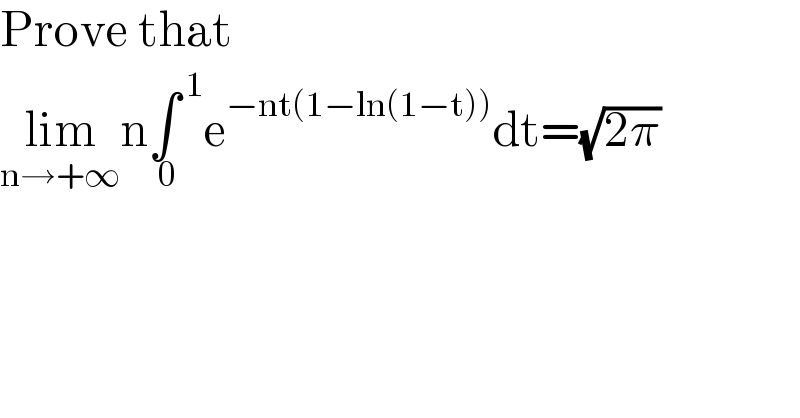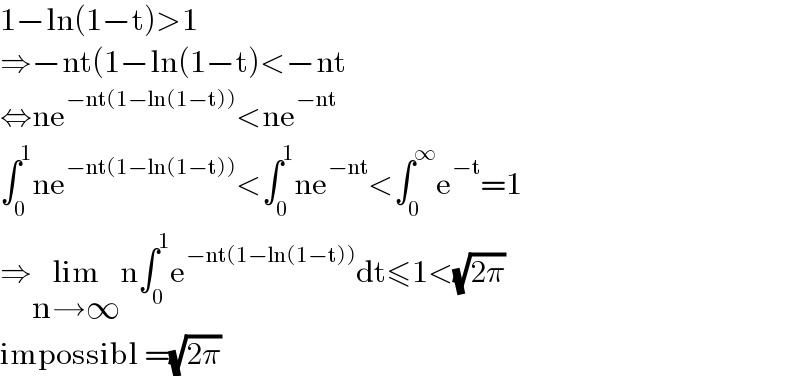
Question Number 196986 by Erico last updated on 05/Sep/23

$$\mathrm{Prove}\:\mathrm{that}\: \\ $$$$\underset{\mathrm{n}\rightarrow+\infty} {\mathrm{lim}n}\underset{\:\mathrm{0}} {\int}^{\:\mathrm{1}} \mathrm{e}^{−\mathrm{nt}\left(\mathrm{1}−\mathrm{ln}\left(\mathrm{1}−\mathrm{t}\right)\right)} \mathrm{dt}=\sqrt{\mathrm{2}\pi} \\ $$
Answered by witcher3 last updated on 07/Sep/23

$$\mathrm{1}−\mathrm{ln}\left(\mathrm{1}−\mathrm{t}\right)>\mathrm{1} \\ $$$$\Rightarrow−\mathrm{nt}\left(\mathrm{1}−\mathrm{ln}\left(\mathrm{1}−\mathrm{t}\right)<−\mathrm{nt}\right. \\ $$$$\Leftrightarrow\mathrm{ne}^{−\mathrm{nt}\left(\mathrm{1}−\mathrm{ln}\left(\mathrm{1}−\mathrm{t}\right)\right)} <\mathrm{ne}^{−\mathrm{nt}} \\ $$$$\int_{\mathrm{0}} ^{\mathrm{1}} \mathrm{ne}^{−\mathrm{nt}\left(\mathrm{1}−\mathrm{ln}\left(\mathrm{1}−\mathrm{t}\right)\right)} <\int_{\mathrm{0}} ^{\mathrm{1}} \mathrm{ne}^{−\mathrm{nt}} <\int_{\mathrm{0}} ^{\infty} \mathrm{e}^{−\mathrm{t}} =\mathrm{1} \\ $$$$\Rightarrow\underset{\mathrm{n}\rightarrow\infty} {\mathrm{lim}n}\int_{\mathrm{0}} ^{\mathrm{1}} \mathrm{e}^{−\mathrm{nt}\left(\mathrm{1}−\mathrm{ln}\left(\mathrm{1}−\mathrm{t}\right)\right)} \mathrm{dt}\leqslant\mathrm{1}<\sqrt{\mathrm{2}\pi} \\ $$$$\mathrm{impossibl}\:=\sqrt{\mathrm{2}\pi} \\ $$
